| Zeitschrift Umělec 2000/1 >> Nikola Tesla - The Future is Mine | Übersicht aller Ausgaben | ||||||||||||
|
|||||||||||||
Nikola Tesla - The Future is MineZeitschrift Umělec 2000/101.01.2000 Keiko Sei | media art | en cs |
|||||||||||||
|
"Nikola Tesla, the inventor of the poly-phase alternating-current system,
alternating-current power transmission, rotating magnetic field principle, induction motor, Tesla coil transformer, radio, wireless communication, remote control system, fluorescent lights and neon bulbs, laser, the principle of the microwave oven, discoverer of the electron, and much more. A pioneer of automaton-robotics, missile systems, radar systems, research on X-ray and Plasma, and much more. On last New Year’s Eve I was in Berlin at my Japanese friend’s place. The city was preparing to host two million visitors who wanted to see the Millennium light show. The author of the show was said to have been under pressure since he had to change the design after criticism that the design was like the light show the Nazis had done in the1930s. So they needed more colors and could not cross the lights. We didn’t want to go out to see it so we briefly watched it on TV. What we saw was whitish lights, no color, and very much like the Nazi show. My friend called her mother just after midnight. Her mother told her that she hadn’t been able to call her because Japanese citizens had been told not to make any phone calls over the New Year. The Japanese government was so cautious about Y2K that they had told their citizens to prepare a three day survival kit. “It’s all a waste now,” said the mother. We continued watching TV after the call. CNN was sending live broadcasts of New Year celebrations every hour from different cities all over the world, starting in Sydney. Most of the big cities were celebrating with fireworks, light shows and Oldfield-Jean-Michel-Jarre type of computer music which all looked the same. “Well,” she said, when my eyes were almost closed as the New Year line was crossing the Atlantic ocean, “events are all unimaginative, nothing happened with the Y2K, so for the rest of the night I’m gonna focus on the terrorist attack. I will stay awake until we reach the American continent so that I can see at least one or two.” The American government had warned their citizens worldwide to stay away from crowds around New Year’s as they had obtained credible information of possible terrorist attacks on American citizens. New York was about to host the biggest New Year celebration with the biggest light show the city had ever seen. Exactly one century ago in New York, mass media were preoccupied daily with the hightening competition between the arch rivals Thomas Edison and Nikola Tesla, about who invented what, whose invention was better than the other’s, and who got more public attention. The battle had already seen its peak when Tesla proved the superiority of his AC (Alternative Current) system over Edison’s DC (Direct Current). Edison campaigned strongly against Tesla and his AC by touring around America showing people how cats and dogs (which local boys collected after Edison paid 25c per animal) were electricuted with 1000 volts AC. They even used a person’s death for the campaign—in 1890 the New York state prison authority announced the first execution of a condemned criminal by electric chair. The Edison group had surreptitiously lobbied the authority to use AC for the electric shock. The story is that the Edison group which was in charge of the execution had to put the electric shock to the man many times as their only previous experience was with small animals, and they hadn’t been prepared to execute a human. The scene was said to have been messy. Despite the nasty campaign, AC was winning. In 1893, the World Expo in Chicago, the first Expo with electricity, was brightly lit up by Tesla’s AC. When the city mayor turned the key, 1000 light bulbs of the light tower and copies of the world’s historical buildings were illuminated. People were mesmerized. At night they watched, with tears in their eyes, an illuminated fountain sparkling with search lights. They enjoyed riding on the electric tram car. Tesla performed his trade-mark “magic” in a frock coat and white gloves. He held a simple tube lit up only by his body, a spark with high voltage electricity, and so on and so on. In 1896 the great water of Niagara Falls was used for the first time to generate electric power using the poly-phase alternative current system. The city of Buffalo was lit up and the trams started to run. The statue of Tesla which tourists can see now at Niagara Falls testifies to the achievement of the inventor who also accelerated the flight industry, as his AC was able to send electric power to the aluminium industry in the region. Thus, at the end of the19th century there was fierce competition among various inventors. One month, even one week was often critical in the battle for obtaining patents. There were also numerous industrialists who were looking for new inventions. A freelance inventor like Tesla who didn’t belong to any institute always had to depend on patents and sponsors. The frequent attendance of dinner parties and elite society as well as lecturing for the science academies were the means to meet potential sponsors. More than a few inventors and Nobel prize winners later admitted to having been inspired and encouraged by Tesla’s lectures. Some of them simply took ideas from a man who sometimes talked too much and too generously about his inventions. One of them was a young Italian man called Marconi, who is even now believed by many to be the inventor of the radio. In 1943 the American Federal Supreme Court decided Tesla’s patent on the radio came earlier than Marconi’s. It was half a year after Tesla’s death, so he never heard the verdict for which he had been fighting for so many decades while Marconi kept using Tesla’s invention as his own. In 1898 Tesla demonstrated the remote-controlled boat at Madison Square Garden. This became not only the first remote controlled object which we use daily today but the ship also became the first automaton (Tele-automaton as he called it), or in other words, the first robot. Tesla clearly predicted in the early 1920s today’s modern society: that the newspaper will be wirelessly printed at each home instead of being delivered, that people will use pocket-sized devices for telecommunication, that “we shall be able to watch and hear events such as the presidential inauguration; World Series match; natural catastrophe; and the war simultaneously as if we were physically there at each event.”1 This is the striking picture of what’s happening around us now. The “World Wireless System” or “The World System” as Tesla called it, could have been realized through his inventions in his life time if there had been sufficient funds to carry out the experiment.2 At that time his vision was too advanced for any industrialist to understand and to invest in. Many of his letters, which we can see in the archives and museums, show how he was desperately looking for funding to fulfill the project. The “death beam” which was presented to the US military over and over again didn’t receive funding either because no one in the military could foresee the potential of the invention. Several drawings from that time which were inspired by Tesla’s vision show the image of a future war in which all vehicles are Teleautomatons and are controlled remotely, beams and lights penetrating the sky.3 The tower on Long Island that Tesla built in 1901-02 is portrayed in the center of the pictures as a base to send information and data as well as electric energy. (In fact, because Tesla’s idea was to invent a system that can send both information and energy, he was behind Marconi in demonstrating the radio transmission as Marconi only concentrated on transmitting information.) As we all know, in 1991 the Gulf War came very close to these pictures of Tesla’s war. Let me take a look at more innocent pictures. Several distinguished and important avantgarde films of the Czech and world cinema, Praha v záři světel (Prague Shining in Lights) by Svatopluk Innemann (1928), Světlo proniká tmou (The Light Penetrates the Dark) by František Pilát and Otakar Vávra (1930), Žijeme v Praze (Living in Prague) by Otakar Vávra (1932), show the swinging 20s in Prague when the city was illuminated brightly with lights and neon signs. Světlo proniká tmou portrays the kinetic and light sculpture of Zdeněk Pešánek that lit up the sky from the facade of the electric station (which is ironically, in this context, called Edison Transformer Station). Pešánek was using neon light and creating imaginative kinetic and light sculptures at the time. The optimism of the Czechoslovak nation between the wars was thus expressed and emphasized by bright lights and neon. It was all possible because of Tesla. The question then is why the most important and genius inventor of the century is totally forgotten now. Why does Edison appear in every textbook all over the world while Tesla is only known to electric engineers and among SF or occult fans? One web site on the inventor, among millions of links, says it all. This is taken from the web ring called The Tesla Coil Web Ring: “...The Tesla Coil Web Ring is about bringing Coiler’s together from around the world. Who can join the Ring: all that is required is that you have a web page which contains information about Tesla Coils, Nikola Tesla, or similar HV devices (Van de Graaf Machines,Wimhearst Machines, Jacobs Ladder, Plasma Globes, Partical Accelerators, Kirlian photography, etc...). If in doubt mail jgore@ticnet.com. WE DO NOT ALLOW FRINGE SCIENCE SITES into our ring, sorry. Fringe sites include: Free energy, Antigravity, Tesla Beam weapons, or High Voltage Healing devices. If your site has anything to do with: Crystals, UFOs, religious mumbo jumbo, mysticism, or conspiracies then your site can NOT be included either, sorry. (Go to http://www.webring.org and start your own ring—it’s easy!)” It’s hardly possible to talk about Tesla merely as an inventor. His scholars always have to deal with the “fringes” that follow him around. There are complex reasons for this, and it’s exactly this complexity that first interested me in the inventor. This is also why I started to organize a series of exhibitions and a symposium, believing that this was a significant subject for the media art context of the late 1980s to early 1990s. It’s next to impossible to summarize the life of the inventor in a short text. Therefore, I should focus here on why Tesla has been wiped from the pages of history. Early Days And Unusual Imagination Nikola Tesla was born the son of a Serbian Orthodox priest in the Croatian region of Lika in 1856. After studying in Graz and Prague, he worked for the newly established American telephone company in Budapest. He immediately improved Bell’s devices, including an amplifier that became the prototype of today’s loudspeaker. He had the idea to use a telephone cable to transmit the sound of each musical instrument’s part and all together to create orchestral concert music only by telephone transmission. The episode shows not only his inventive genius but also his incredible imagination as an artist, which distinguished him from other inventors like Edison. However, this unusual imagination also gave him such titles as “Mad Scientist”4 which hinted at the occult, and textbooks prefer to teach children about an inventor who would be immediately connected with industry. And, most notoriously, it was because of his imagination that he was eliminated from history. Free Energy He was convinced of the possible invention of an electric energy transmission system in which anybody can take electric power from any point on earth, and that the energy can be generated without the consumption of vital natural resources. This “World System” that can transmit information, data, as well as energy anywhere was already advanced in experiments at his laboratory in the Long Island tower. He was also openly predicting the invention of light bulbs that don’t need to be changed. These ideas had terrified the industry until a combination of misfortunes such as fire and financial difficulty prevented him from completing the experiment. The industrial giants and powerful cartels such as Rockefeller and J.P. Morgan of General Electric are said to have tried to sabotage the invention by financial means. And quite possibly other means were used to disregard the genius and his achievements. One striking example is the 1921 photo of Einstein, Charles Steinmetz and Tesla. Another copy of the same photo circulated among journalists for a while. Tesla does not appear in the modified version of the photo. He was erased so that he would not be ranked along with Einstein. This kind of manipulation of photos, which is often used in totalitarian societies such as the early Soviet Union, was thus used for removing the inventor’s vision, which could be utopian, from people’s memory. Until his death, the anti-Tesla alliance of Edison, Marconi, Steinmetz and others would find any occasion to attack Tesla’s ideas and actions. Responding to the question about how he was bothered by such hindering people, he made this now-famous comment “The present is theirs.... the future is mine.” Death Rays There is, however, a larger scale of involvement in this mysterious erasure from history. Tesla died in 1943 alone in a hotel room in New York, sometime between January 5 and January 8. What happened shortly after his death remains one of the biggest mysteries that surrounds the inventor. Most of his effects were seized by the Alien Property Custodian (Why this office? Tesla was an American citizen) after, it’s said, the FBI’s consultation. It’s said that Naval authorities made microfilm copies of all his papers. It’s said that Sava Kosanovich, Tesla’s nephew who had a key to Tesla’s safe, sent most of the documents to the Tesla Museum in Belgrade but claimed that something was missing when they arrived at the museum. It’s also said that he could have been lying. It’s said that after the authorities spoke with then FBI director Hoover and vice-president Wallace, they decided to handle his inventions as Top Secret. This concerned Tesla’s more sensitive inventions such as the “teleforce” or what is called the “Tesla shield,” a kind of an anti-ballistic missile defense which could destroy the electronics of hostile missiles or satellites. It is based on a plasma packet of high energy particles which Tesla was experimenting with in Colorado Springs. This type of research is now carried out at HAARP (High Frequency Active Auroral Research Program) which was built at Gakona, Alaska, in 1993 by the US Department of Defense. The research facility involves such institutes as the Universities of Alaska, Massachusetts, Stanford, Cornell, UCLA and MIT in its program of experiments to study the resonant properties of the earth and its atmosphere.5 Caught In Cold War At the height of the Cold War Tesla’s ideas were secretly smuggled in and out, crossing continents and oceans. The US and U.S.S.R. were competing on the realization of Tesla’s ideas and their application for war. The American Tesla scholars claim they had difficulty accessing the documents that were sent to Belgrade after his death, which was on the other side of the Iron Curtain, and that Soviet scholars had the advantage of using them. Russians were particularly interested in his system of controlling the weather by stimulating the air waves. Today only Russia actually carries out the weather changing project. After the Cold War was over, a new threat suddenly emerged. In 1995, the Tokyo subway was sprayed with Sarin gas, an incident that shocked the whole world as it broke the taboo of terrorist attacks using nerve gas on the masses. The group that carried it out was the Doom cult called Aum Shinrikyo. Creating Earthquakes, the Earth Split In Two Prior to the event, the Aum is said to have carried out a series of experiments in Western Australia. The experiments included earthquake inducing power weapons and the Tesla Shield, both of which are Tesla’s inventions. In 1896 Tesla accidentally caused an earthquake in New York City by using a small vibrating mechanical oscillator in his laboratory on Houston Street. When the oscillator received a return signal of longitudinal seismic or sound wave energy it added a new impulse “ping” to the return, and after a few minutes this wave had built up to such a level that harmonic oscillational forces created local ground earthquakes.6 He carried the pocket-sized oscillator around town and tried it on a lot of construction sites, shaking whole buildings. After this, he developed the theory that with the same principle he could even split the earth in two. He then established the whole genre of study called “telegeodynamics,” and one of his most distinguished contributions is said to have been the discovery of terrestrial stationary waves. This means that for Tesla the earth could be used as a conductor that is “responsive to electrical vibrations of definite pitch just as a tuning folk to certain waves of sound.”7 The discovery could be used for the purpose of preventing an earthquake; yet, as the Aum proved, the hands of criminals could use it as a catastrophic weapon. Aum and Tesla On the occasion of the 5th International Tesla Conference in Belgrade that commemorated the 140th anniversary of his birth in October 1996, I met two ladies from the Tesla Museum, Ms. Zorica Civrič and Ms. Dubravka Smiljarič. We mostly talked about the book of Tesla’s collected letters which had been compiled by them after exhaustive work but which had not credited their names.8 At some point we touched on the topic of the Aum who were keen researchers of Tesla. In 1992 four members of the sect resided at the Museum for one month of “research.” After being disappointed by the fact that they couldn’t access much information from the International Tesla Society in America, they negotiated with the Belgrade museum to copy the museum’s documents into their database in exchange for donating a computer to the museum afterwards. It was only later, through a photo of them in a journal, that the museum staff found out that the four were the members of the sect that caused the tremendous shock worldwide. The Philadelphia Experiment The Philadelphia Experiment, which became known to the wider public by the film of the same title in 1983, is closely associated with the name of Tesla. It refers to the teleport incident that happened during a US Navy experiment. The origin was a 1930s theoretical study of the University of Chicago and Princeton and was converted to the military program called Project Rainbow as the war progressed. The series of tests were carried out in 1943 to find a method to produce an “invisible screen” around the ship named Eldridge outside of Philadelphia. On the final test in August 1943 the ship returned to “normal time and location” but without the crew members. The US Navy has denied this project ever took place. As the US authorities sealed Tesla’s documents from the public we don’t know whether he himself was actively involved in the project (the tests were carried out just after his death in 1943) or if the Navy only studied his theory.9 No matter what actually happened this incident undoubtedly has contributed to shoving Tesla into the “wacky” or “fringe science” category. Mars During the Colorado Springs laboratory period, Tesla received an unusual signal when he was performing tests on high-frequency radio. Assuming that this was from another planet, he published the report. This “listening to signals from other planets,” now commonly practised at astronomical institutes, was dismissed by academics at that time. The label of Tesla The Mad Scientist was augmented. Later that year Tesla openly stated the possibility of contacting Mars and other planets, which became an ideal target for academics as well as another reason for the anti-Tesla alliance to denigrate the inventor. Other Fringes Kirlian photography—photos of invisible phenomena such as human auras and ghosts. Tesla succeeded in taking Kirlian photographs with his high-frequency voltage generated by the Tesla coil. Tesla’s memory—he could construct every invention entirely in his mind and didn’t need to sketch it out. This sometimes caused confusion among scholars for record and archival purposes. It also caused jealousy from other inventors and engineers. Homosexuality—he never married. Throughout his lifetime he was suspected of being gay, which was also used to derail him by the anti-Tesla alliance. UFOs—so called “contactees” have been inspired by Tesla’s idea of contact with other planets. The flying vehicle that some engineers designed had been made according to Tesla’s model. After his death there was a rumor that several engineers who worked at Tesla’s lab maintained contact with outer space. SF— in 1926 the world’s first commercial SF magazine, Amazing Stories, was born. The founder Hugo Gernsback, who earned the title of “Father of American SF,” was a keen Tesla enthusiast. Frank P. Paul who illustrated Tesla’s visions, was Gernsback’s artistic partner at the magazine. "
01.01.2000
Empfohlene Artikel
|
|||||||||||||
|
04.02.2020 10:17
Letošní 50. ročník Art Basel přilákal celkem 93 000 návštěvníků a sběratelů z 80 zemí světa. 290 prémiových galerií představilo umělecká díla od počátku 20. století až po současnost. Hlavní sektor přehlídky, tradičně v prvním patře výstavního prostoru, představil 232 předních galerií z celého světa nabízející umění nejvyšší kvality. Veletrh ukázal vzestupný trend prodeje prostřednictvím galerií jak soukromým sbírkám, tak i institucím. Kromě hlavního veletrhu stály za návštěvu i ty přidružené: Volta, Liste a Photo Basel, k tomu doprovodné programy a výstavy v místních institucích, které kvalitou daleko přesahují hranice města tj. Kunsthalle Basel, Kunstmuseum, Tinguely muzeum nebo Fondation Beyeler.
|







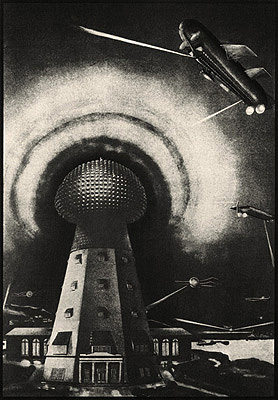






























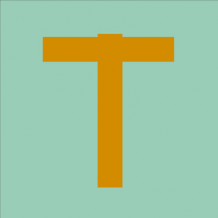
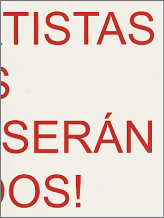
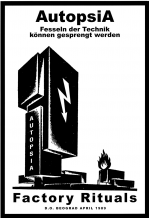
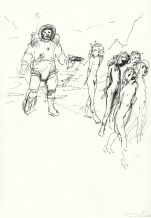


 New book by I.M.Jirous in English at our online bookshop.
New book by I.M.Jirous in English at our online bookshop.
Kommentar
Der Artikel ist bisher nicht kommentiert wordenNeuen Kommentar einfügen